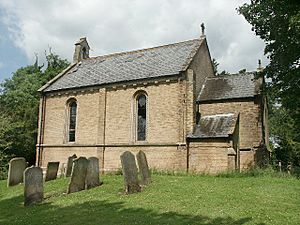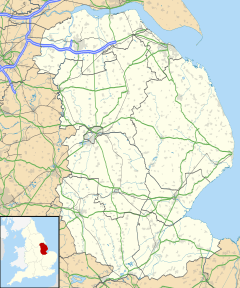Claxby St Andrew facts for kids
Quick facts for kids Claxby St Andrew |
|
|---|---|
 Church of St Andrew, Claxby St Andrew |
|
| Population | 43 (2021 census) |
| OS grid reference | TF450714 |
| • London | 115 mi (185 km) S |
| Civil parish |
|
| District | |
| Shire county | |
| Region | |
| Country | England |
| Sovereign state | United Kingdom |
| Post town | Alford |
| Postcode district | LN13 |
| Police | Lincolnshire |
| Fire | Lincolnshire |
| Ambulance | East Midlands |
| EU Parliament | East Midlands |
| UK Parliament |
|
Claxby St Andrew is a very small village in Lincolnshire, England. It is sometimes just called Claxby. This tiny village is located about 3 miles (5 km) south of the town of Alford. In 2021, only 43 people lived in Claxby St Andrew, making it a very quiet place.
Village History
Claxby St Andrew has a long history, with some interesting old buildings. These buildings tell us about how people lived here many years ago.
The Old Church
The village church, named after Saint Andrew, was built in 1846. It replaced an even older church that had a roof made of straw, called a thatched roof.
In 1990, the church was no longer used for regular services and was sold. Today, it is a "Grade II listed building." This means it is an important historical building that is protected.
Claxby Manor House
Claxby Manor House, also known as Claxby Hall, was built around 1760. People believe it was built for a person named Samuel Dashwood.
This house later became the vicarage, which is where the local church leader lived. It is also a Grade II listed building, just like the old church.
It's interesting to know that the building now called Claxby Manor House is actually a different one. It is located across the valley from the original manor house.
Nature and Wildlife
Claxby St Andrew is also home to an important natural area. This area protects special plants and animals.
Claxby Chalk Pit
East of the village, you will find Claxby Chalk Pit. It is also known as Mill Hill Quarry. This area is very important for nature.
It is a "Site of Special Scientific Interest" (SSSI). This means it has special plants, animals, or geological features. It is also a nature reserve, which helps protect its wildlife.


